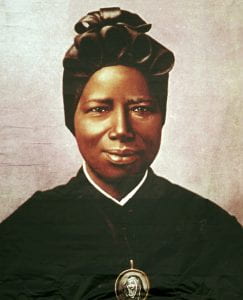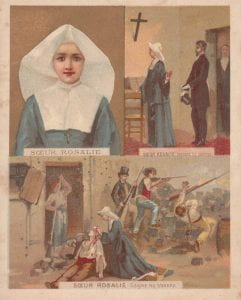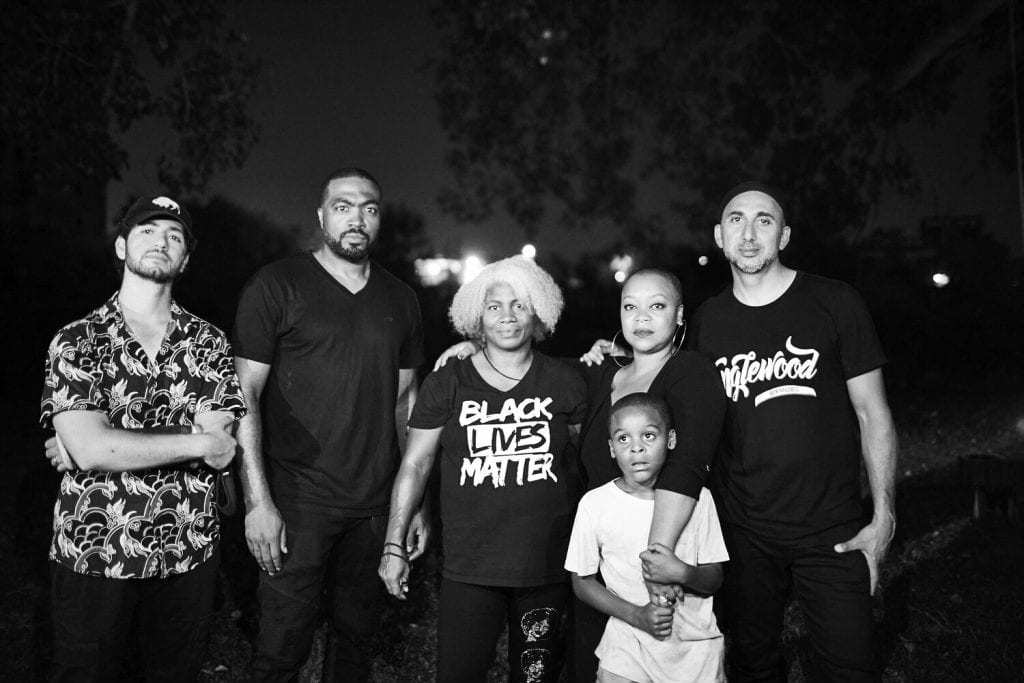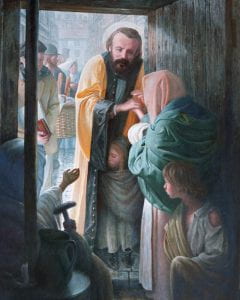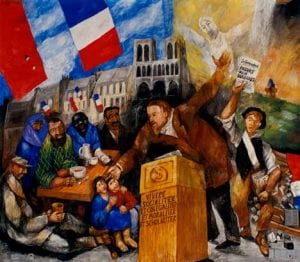The following reflection was shared in advance of the Lenten season to members of the Vincentian Family by Rev. Tomaž Mavrič, CM, Superior General of the Congregation of the Mission in Rome, Italy on February 10, 2021.
 Dear members of the Vincentian Family,
Dear members of the Vincentian Family,
May the grace and peace of Jesus be always with us!
After the dramatic events of last year as the suffering caused by wars, natural disasters, and famine was compounded by the pandemic of COVID-19, our faith calls us to live this new year 2021 in hope, even in situations that are, humanly speaking, hopeless.
With the opening of the Lenten Season, we continue our reflection on the foundations that made Saint Vincent de Paul a “Mystic of Charity” and more specifically on his relationship, and ours, with the disfigured Christ, which we began to explore with the icon of the “Savior of Zvenigorod.”
As I wrote in last year’s Advent letter, the person of Jesus is at the heart of Vincent de Paul’s identity as a Mystic of Charity and of the Vincentian charism and spirituality. Jesus is the reason for our lives and the person whose way of thinking, feeling, talking, and acting becomes our life goal. Vincent knew the importance of a close relationship with Jesus for personal conversion and effective ministry: “Neither philosophy, nor theology, nor discourses can act in souls; Jesus Christ must be involved in this with us – or we with Him – so that we may act in Him and He in us, that we may speak as He did and in His Spirit, as He himself was in His Father, and preached the doctrine He had taught Him.”[1]
If the Icon of the “Savior of Zvenigorod” invites us to contemplate the face of Jesus, this Lenten reflection invites us to a dialogue with the disfigured Jesus. Around 30 years ago, I came across a book written by a Spanish Jesuit, Ramón Cué, called, My Broken Christ. The cover of the book pictured a broken crucifix. Christ was missing a leg, His right arm, and the fingers of His left hand; He had no face, and not even a cross. That image caught my attention, and its story made me desire such a figure for myself.
My Broken Christ is about a priest who loved artwork. One day, while visiting an antique shop, he saw a sculpture, among many beautiful sculptures, pictures, and other pieces of art, that right away attracted his attention. It was this broken crucifix. The work of a well-known artist, it still had its market value despite the damage.
It so intrigued the priest that he decided to buy it and have it restored to its original beauty. The restorer whom he approached realized that it would take much work to repair the image and thus asked for a large amount of money. The priest could not pay such a high price, so he decided to take home the broken Christ as it was.
Looking at the broken Christ back home in his room, the priest started to feel uneasy, to the point of becoming angry. In a loud voice, he asked, “Who could do such a thing to You? Who could take You so brutally from the cross? Who could disfigure Your face so terribly?”
All of a sudden, a sharp disembodied voice said, “Be quiet! You are asking too many questions.”
The penetrating voice coupled with the mutilated body hardly brought the priest peace. Still in a state of shock after hearing Christ speak, the priest wanted to make Christ feel well and said with trembling voice, “Lord, I have an idea that You will like. I will find a way to have You restored. I do not want to see You so mutilated. You will see how good You will look. You know You are worth everything. You will get a new leg, a new arm, new fingers, a new cross, and, above all, You will get a new face.”
Again, a voice was heard and Christ said forcefully, “You disappoint me. You speak too much. I forbid you to restore me!”
Surprised by the broken Christ’s energy and determination, the priest countered, “Lord, You do not understand. It will be a continuous pain for me to see You broken and mutilated. Do You not understand how You grieve me?”
The Lord answered, “That is exactly what I want to achieve. Do not restore me. When you see me this way, let us see if you will remember my brothers and sisters who suffer and if you will grieve. Let us see if the sight of me so broken and mutilated can be the symbol of the pain of others, the symbol that will cry out the pain of my second Passion in my brothers and sisters. Leave me broken! Kiss me broken!”
The priest said, “I have a Christ without a cross. Some people may have a cross without Christ. He cannot rest without a cross, and a personal cross can only be tolerated with Christ. We started looking for a wooden cross for the broken Christ, where He can rest. We found instead our cross. Put them together, and the broken Christ will be complete. The broken Christ reposes on our cross, and we will carry the cross together.”
Still uneasy, the priest continued his intense dialogue with Christ, saying, “I would like to restore Your missing hand.” The Lord responded, “I do not want a wooden arm. I want a real hand of flesh and bone. I want you to become the hand that I am missing. You!”
“Lord,” exclaimed the priest, “You have just one leg. You cannot even walk alone. You need help.” Christ responded, “I need to work as I did in Nazareth.” The priest said, “If You want, I am ready to accompany You to find work. However, I warn You that, in Your current state, unless You present Yourself as Christ Himself, You will never find work.”
Christ prohibited the priest from presenting Him as Christ. Together they visited many stores and businesses, but nobody offered Christ a job. Christ exclaimed with a heavy voice, “How can one say one loves Christ and with the same heart despise people looking for an honest job? I am they and they are I.”
The priest lamented, “How hard it is for me to love Christ without a face.” He spent many hours trying to find an adequate, beautiful face for his broken Christ, to ease his inner restlessness, but Christ once more said with a strong voice, “I want to remain like this, broken, without a face. Why would you like to restore me, for you or for others? Does seeing me in this deteriorated state make you feel uneasy?” Christ said more gently, “Please, accept me as I am. Accept me broken, accept me without a face.”
Christ continued, “Do you have a picture of someone you do not like, your enemy? Put the face of that person on my face, put the faces of all the most abandoned, rejected, poorest people over my face. Do you understand? I gave my life for all of them. In my face, there were all their faces. Do you understand?”
After long conversations with Christ, in the end, the priest understood Christ’s message and, in a soft voice full of longing, said, “Christ, I would like to accept Your invitation, but please, help me! Help me!”
After several years longing to find my image of a broken Christ, the day finally arrived. Approaching a building, all of a sudden, I looked to my right, and there it was: a broken Christ. I do not have any idea how the sculpture got there. I often passed in front of that building, but I never before saw any other old or broken item placed there for someone to take.
I remember my excitement and impatience, wondering if I would be allowed to have the figure. After I asked and received permission, I quickly left and took the broken Christ home. Once in my room with “my broken Christ,” I started crying. From that day on, it has never left me.
Why did I want to have a broken Christ? As the priest in the story, I would naturally prefer a beautiful, complete Christ on a nice cross that could be hung for veneration. From where, then, did this wish to find a broken Christ come? Certainly not from me. The only answer that I can find is: it came from Christ.
The broken Christ becomes a clear sign before our eyes that keeps disturbing our peace and calling us to conversion. He invites us to a continuous dialogue with Him in the here and now of the world and of our everyday relationships. This broken Christ helps us to bring ourselves to Him with our human reality, as well as with the reality of every human being.
Christ is always prepared to listen as well as suggest. He keeps challenging us, but gently and with a never-ending mercy, to answer questions like: Why do you think people disfigured me so badly? Does a broken Christ make you uncomfortable? Do broken people make you uncomfortable? What might cause people to change their attitude toward those considered disfigured? Where do you see yourself in relation to this reality?
Saint Vincent’s ongoing dialogue with Jesus led to his answers and his advice:
“How beautiful it is to see poor people if we consider them in God and with the esteem in which Jesus Christ held them! If, however, we look on them according to the sentiments of the flesh and a worldly spirit, they will seem contemptible.”[2]
“ … Jesus Christ died for us, isn’t that enough to esteem a person? Jesus showed so much respect for us that He willed to die for us. By so doing, it would seem that He valued us more highly than His own Precious Blood, which He shed to redeem us, as if He were saying that He doesn’t value His Blood as highly as all the predestined…”[3]
My own broken Christ, whether before my eyes or in my thoughts, invites me to a real dialogue. May this Lenten Season help us to deepen or simply start a conversation with the broken Christ, which certainly will not leave us indifferent.
Your brother in Saint Vincent,
Tomaž Mavrič, CM
Superior General
[1] Vincent de Paul, Correspondence, Conferences, Documents, translated and edited by Jacqueline Kilar, DC; and Marie Poole, DC; et al; annotated by John W. Carven, CM; New City Press, Brooklyn and Hyde Park, 1985-2014; volume XI, page 311; conference 153, “Advice to Antoine Durand.” Future references to this work will be indicated using the initials CCD, followed by the volume number, then the page number, for example, CCD XI, 311.
[2] CCD XI, 26; conference 19, “The Spirit of Faith.”
[3] CCD X, 394; conference 96, “Cordiality, respect and exclusive friendships.”

